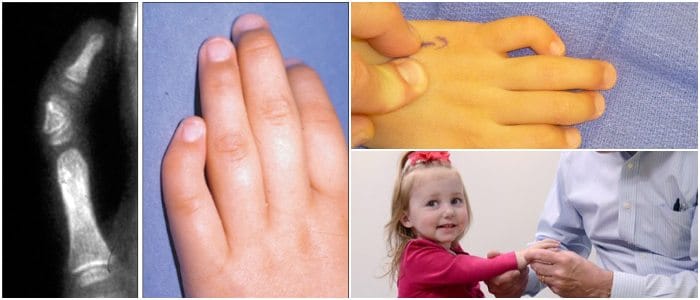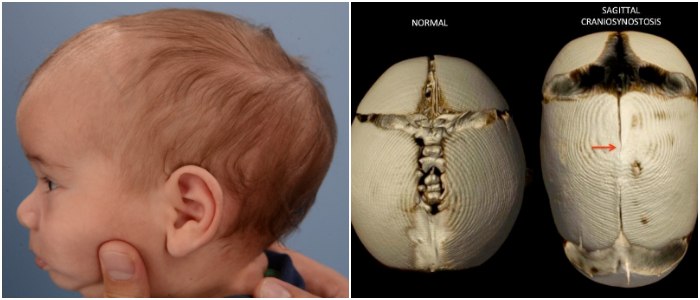It’s an orthosis meant to correct cranial asymmetry.
Plagiocephaly refers to a malformation of the skull in which the development of the cranial structure of an infant features the flattening of one side of the head.
During the last two decades, the Joint Section on Pediatric Neurosurgery of the American Association of Neurological Surgeons and the Congress of Neurological Surgeons (CNS) looked for reliable ways to manage this condition.
One of the treatments they recommend, once the doctors made a clinical diagnosis, is the use of a cranial orthosis.
An orthosis is an orthopedic device used to support, align, or correct deformities of the neuromuscular and skeletal system.
In this particular case, treatment for plagiocephalic children involves the use of an orthosis known as the “Plagiocephaly Helmet.”
However, medical experts only resort to the helmet in cases of moderate Plagiocephaly. When the condition of the baby is more severe, healthcare providers will likely prefer other treatments.
Cranial Helmet Therapy
Doctors acknowledge that mild head deformities are not easy to notice. In fact, by the age of five or six months, the malformation becomes unnoticeable.
However, in moderate cases of Plagiocephaly, the primary feature of this condition, which is the significant flattening at the back or to the side of the head, becomes more evident.
After diagnosing and examining the patient, doctors may recommend to the parents’ infants that the child undergoes helmet treatment to deal with this condition.
Helmet therapy, also known as cranial remolding therapy, involves wearing a cranial orthosis for 3-6 months to correct the shape of the head gradually until it becomes symmetrical.
As long as the parent carefully follow the instructions of the child’s clinician, helmet therapy will not result in any harm to the infant. In fact, the use of the orthosis doesn’t hurt at all.
Wearing Regime
During the first two days, Babies should wear their Plagiocephaly Helmet for about 2 hours. Then parents should take off the orthosis and let the child be for around 2 hours.
People should monitor their babies’ skin to determine if the children are getting used to the cranial helmet.
After this two-day trial, a healthcare provider will review the case. If the baby got used to the helmet therapy, doctors would likely start the treatment with a 23 hours a day wearing regime.
Ideal Moment for Helmet Therapy
Medical experts recommend correcting the infant’s head shape during their most active period of growth. That would correspond to the period between the fourth and seventh month.
However, some people had experienced positive results when treating 1-year old kids.
Still, after the 14th month, there is not enough growth to bring about a correction and helmet therapy would be completely ineffective. At this moment, the only available option left is surgery.
Recommendations
When the infant is undergoing helmet therapy, parents should make sure there is some space left for their kids’ ears when they wear the orthosis.
When it’s time to take the cranial helmet off, people should check the baby’s skin to make sure there is no rubbing, blisters or broken skin as a result from the use of the helmet.
If the use of the orthosis leads to some skin breakdown or has similar effects, parents can apply topical creams (moisturizer and antifungal ointments) on dry skin or mild rashes.
However, if the resulting rash doesn’t get better after using creams and ointments, people should contact the child’s doctor as soon as possible.
If the weather feels too hot, instead of taking off the Plagiocephaly Helmet, parents should dress the infants in light clothing to keep them fresh.
Possible Complications
When babies wear the Plagiocephaly Helmet correctly, issues such as skin irritation, discomfort, and foul odor don’t occur.
When such problems arise, doctors can adjust the helmet. But, if such issues persist, they can lead to troublesome complications.
One of those complications could be Pressure Sores, which consists of injuries to the skin and underlying tissue caused by prolonged pressure in a specific area.
In some rare cases, babies could develop a Subcutaneous Abscess, which is a pocket of pus that grows in the superficial tissue of the flesh and it’s the result of skin damage.
Other odd issues are related to skin infections due to a misuse of the orthosis.
However, studies show that parents can avoid or eliminate most, if not all possible complications. They only need to follow the doctors’ instructions.




